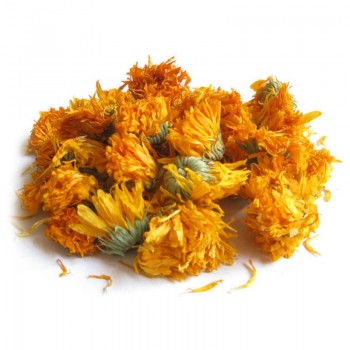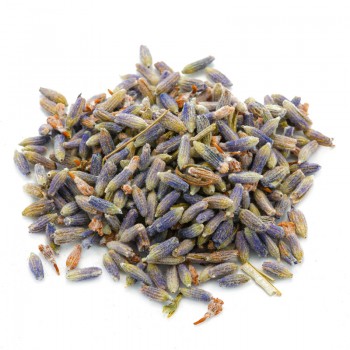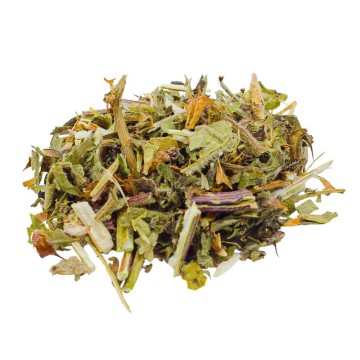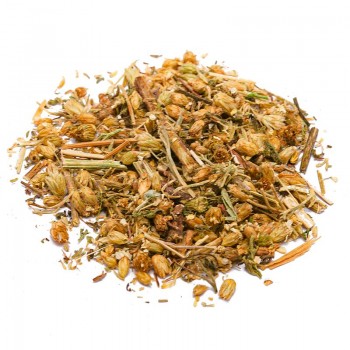Verbena leaves: properties and benefits
The virtues that this plant offers derive from the many vegetal compounds and antioxidants that it makes available to our body. Among the properties attributed to verbena in herbal medicine, there are mainly calming benefits and benefits for digestive function. Taking lemon verbena can help our body, thanks to the polyphenolic compound called verbascoside. This substance has intense antioxidant activity which, together with other compounds, protects cells from free radical damage.
A fragrant herbal tea helps our mind and body to relax, reducing states of stress and nervousness. The infusion has been known for centuries as a relaxing herb and tonic of the nervous system, and today, research confirms the relaxing virtues of verbena, thanks to its potential of flavonoids, verbascoside and tannins known for their natural tranquilizing properties. In case of difficulty falling asleep, a plant such as lemon verbena can help with its natural calming effects.
In herbal medicine, verbena leaves for herbal tea represent an ingredient that helps to relax the mind and the body, rebalancing the psycho-physical energy. Its relaxing properties relieve stress headaches and related states of tension.
This plant has good effects on digestion, supporting regular gastrointestinal motility.
Some elements present in the plant (such as citral) provide natural detox effects in the intestine, promoting the transit of food. They facilitate the purification of toxins and the elimination of intestinal gas (carminative action).
An herbal tea with lemon verbena counteracts irritation during digestion, the symptoms of bloating, meteorism and flatulence. Since it has calming properties against spasms of the gastrointestinal tract, herbal tea can be a support in relieving discomfort due to the menstrual cycle. In addition, lemon verbena can be beneficial for calming irritations of the oral cavity and the well-being of the gums.
Origins and history of cultivation
The origins of lemon verbena date back to South America, where it grows spontaneously in various territories between Argentina, Chile and Uruguay. In the 17th century the Spaniards introduced it to Europe, where today the plant is cultivated. Since then, it has also had other historical names such as lemon verbena, Luigia herb, Luisa herb, limoncina or limonetto, lemon verbena, perseghina herb and lippia. The latter name derives from a tribute to the naturalist Lippi Augusto who saw this plant along the Nile in Egypt in the 18th century. The genus Lippia of the verbena family (Verbenaceae) takes its name from him. The name Citriodora, present in some botanical names of the plant, means lemon scent, in reference to the smell given off by lemon verbena. Botanically it was noticed by several scholars in Buenos Aires (mid-eighteenth century), and then officially published in 1784 in the Parte Práctica de Botánica of Palau (Antonio Palau y Verdera) as Aloysia citriodora.
Today it is still used in the gastronomic and ornamental fields . It is an aromatic element for oils, liqueurs, vinegars, jams and jellies. Lemon verbena is used as an ingredient for sauces, vegetables, salads, fish and chicken dish, omelettes. Some verbena liqueurs are created, also used to add flavor to puddings, yogurt and drinks.
The essential oil of lemon verbena is widespread in the cosmetics industry, used in the preparation of soaps, pot pourri, products for body hygiene and to keep insects away. The plant, in fact, is a repellent for insects and mosquitoes. In aromatherapy, a few drops of lemon verbena oil are used as a calming agent and citrus scent.
Plant and flowers
Verbena odorosa is Aloysia citriodora Palau, a perennial plant of the Verbenaceae family. It has several synonyms, and is also called Lippia citriodora Kunth, or Aloysia triphylla, Lippia triphylla, Verbena triphylla, Verbena citriodora.
It is important not to confuse it with the common verbena, i.e. verbena officinalis. Aloysia or Lippia citriodora is a shrubby plant that can reach up to 3 meters in height. It shows a flexible stem, leaves that are rough to the touch with an elongated and pointed shape. It is the leaves that give off an intense scent, reminiscent of lemon, when they are rubbed. The flowers are small and white, tending towards pink, and before they open in spring the harvesting of the leaves for herbal purposes begins. The plant is evergreen in tropical areas but is sensitive to the cold, losing its leaves at temperatures below zero degrees
Nutritional valuesVerbena flowers – leaves
These parts of the plant contain dozens of components, the best known of which are flavonoid antioxidants, essential oil and various plant compounds. The main ones, isolated from verbena oil, are citral, nerol and geraniol, in addition to the aforementioned verbascoside.
How to use Verbena leaves in herbal tea The infusion is obtained by inserting the verbena leaves as a herbal tea into a cup (250 ml), with water at 100 °C.
Leave the infusion for the minutes indicated on the package before drinking the herbal tea. Add honey or sugar if desired - lemon verbena infusion has a slightly pungent flavour.
Verbena: side effects and contraindications
Verbena leaves are usually recognized as safe, but in some cases they can cause side effects. Phytochemicals can cause herb-drug interactions in some cases when taking tranquilizer or sedative medications. Furthermore, in case of excessive consumption of herbal tea, it is possible that effects such as headache, excessive drowsiness and diarrhea may occur. Precaution is necessary during pregnancy and breastfeeding.






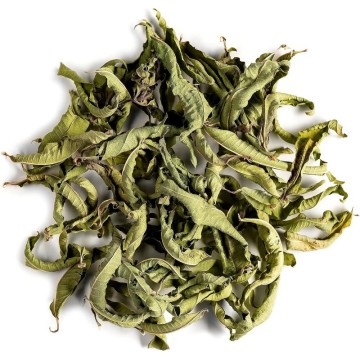




 No reward points for this product.
No reward points for this product.

![infuso relax [Natura d'Oriente]](https://www.naturadoriente.com/3555-home_default/infused-relaxation.jpg)
